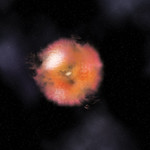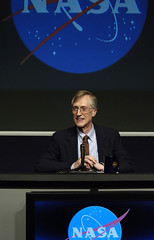
Louis Pasteur discovered the first primitive antibiotic in 1887 which changed health care forever. Percy Spencer developed the first microwave oven in 1947 and changed human dining habits all around the world. Copernicus introduced us to a sun centered solar system, and Kepler discovered that the planets travel in elliptical orbits. These discoveries have changed either the way we conduct our everyday lives or how we conduct our scientific experiments to search for future discoveries.
How does the world find about new discoveries? What is the impact of these new discoveries in our daily lives and future discoveries?
These materials will address those two questions and will allow students to be journalists sharing a new discovery with the world.

Reporters do not know about every topic they report, so they must first research the new discovery before attempting to share it with others. Once they understand the discovery, they need to consider the intended audience of their article. For example, imagine that a company is going to introduce a new video game. If the reporter wrote about the game for a magazine aimed at middle-aged banking executives, it would be a very different article from one written for a gaming magazine aimed at teenagers.
Whatever audience or topic, nothing changes the basic rule for reporting: research the question, determine the audience, then write the article.